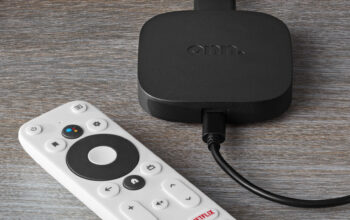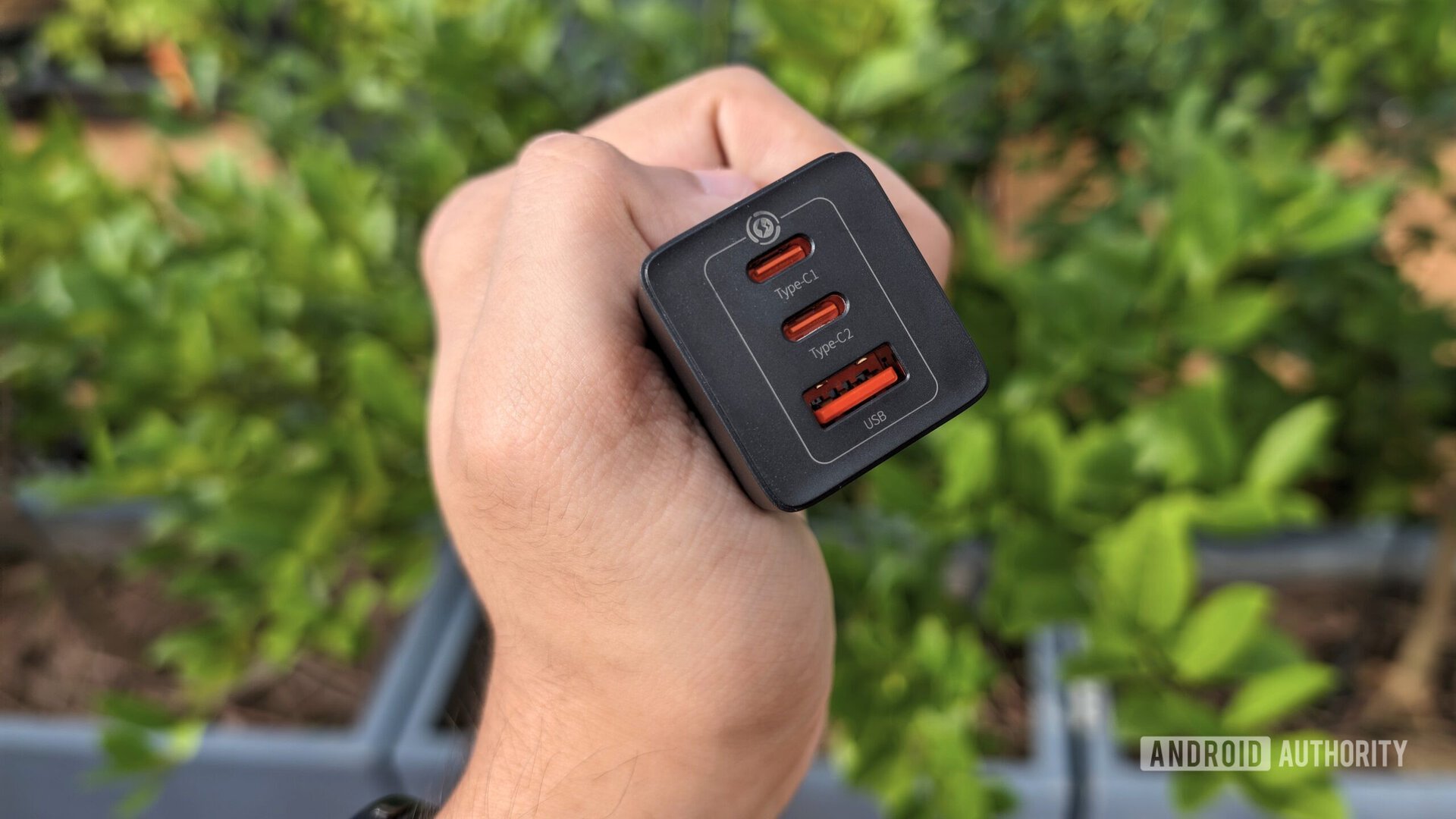
Calvin Wankhede / Android Authority
Say what you will about the haphazard state of USB-C, you’ll still be hard-pressed to deny that it has simplified charging massively. That said, USB-C’s growing presence hasn’t stopped brands from shipping devices with underpowered or bulky power bricks. So until quite recently, I carried around multiple adapters even though all of my devices used USB-C. Thankfully, all of that changed when I stumbled upon GaN chargers — palm-sized adapters that deliver blisteringly fast charging speeds. It’s been less than a year since I made the switch, but I’m already convinced that it’s the best $35 anyone can spend.
About this article: I purchased the Baseus GaN 65W charger for my own use and tested it since the start of 2023.
USB-C charging is a mess but GaN fixes it
Rita El Khoury / Android Authority
It’s true — for the first time in the history of consumer electronics, one cable can charge (nearly) all of your devices. Better yet, the vast majority of devices have adopted the universal USB Power Delivery standard. My Pixel smartphone, for instance, can charge via the same underlying charging protocol as my Surface Laptop 4 and iPad Air. It doesn’t matter that Google, Apple, and Microsoft don’t play nicely with each other elsewhere, they’re all on the same page when it comes to charging.
Despite this excellent interoperability, however, using one brand’s official adapter to charge another device in the real world will usually net you dramatically slower speeds. Google’s sold-separately 30W adapter for my Pixel 8 Pro is too slow to juice up a laptop. Apple’s charging bricks, meanwhile, don’t support the USB PD PPS profile that’s required for my phone to reach its highest power levels.
If all of that sounds complicated, welcome to USB-C. The bottom line is that first-party chargers rarely include all of the specs you’ll need to charge other devices. Imagine buying Apple’s 140W adapter only to find that it can’t charge the Galaxy S23 Ultra beyond 18W — frustrating, to say the least.
First-party USB-C chargers often miss out on some key charging specs.
Luckily, there’s a simple solution — third-party GaN chargers that support nearly every single USB PD profile under the sun. The one I use can deliver up to 65W and charge all of my devices at full speed. Have higher power needs? You can get 100W, 240W, and even 300W GaN chargers (UGREEN 300W GaN on Amazon) these days. They won’t all fit in the palm of your hand, mind you, but most are still appreciably smaller than a typical laptop power brick.
Based on the convenience and cutting-edge tech on offer, you’d expect GaN chargers to cost a pretty premium. However, you can pick up a 65W adapter like the one I own for as little as $31 on Amazon. I’ll recommend a few higher-power options later, but I gravitate towards 65W models because of their tiny footprint. It’s the smallest you can go while still charging most laptops within a reasonable time frame. Speaking of size, how in the world do GaN chargers achieve this impressive feat?
What is GaN and how does it work?
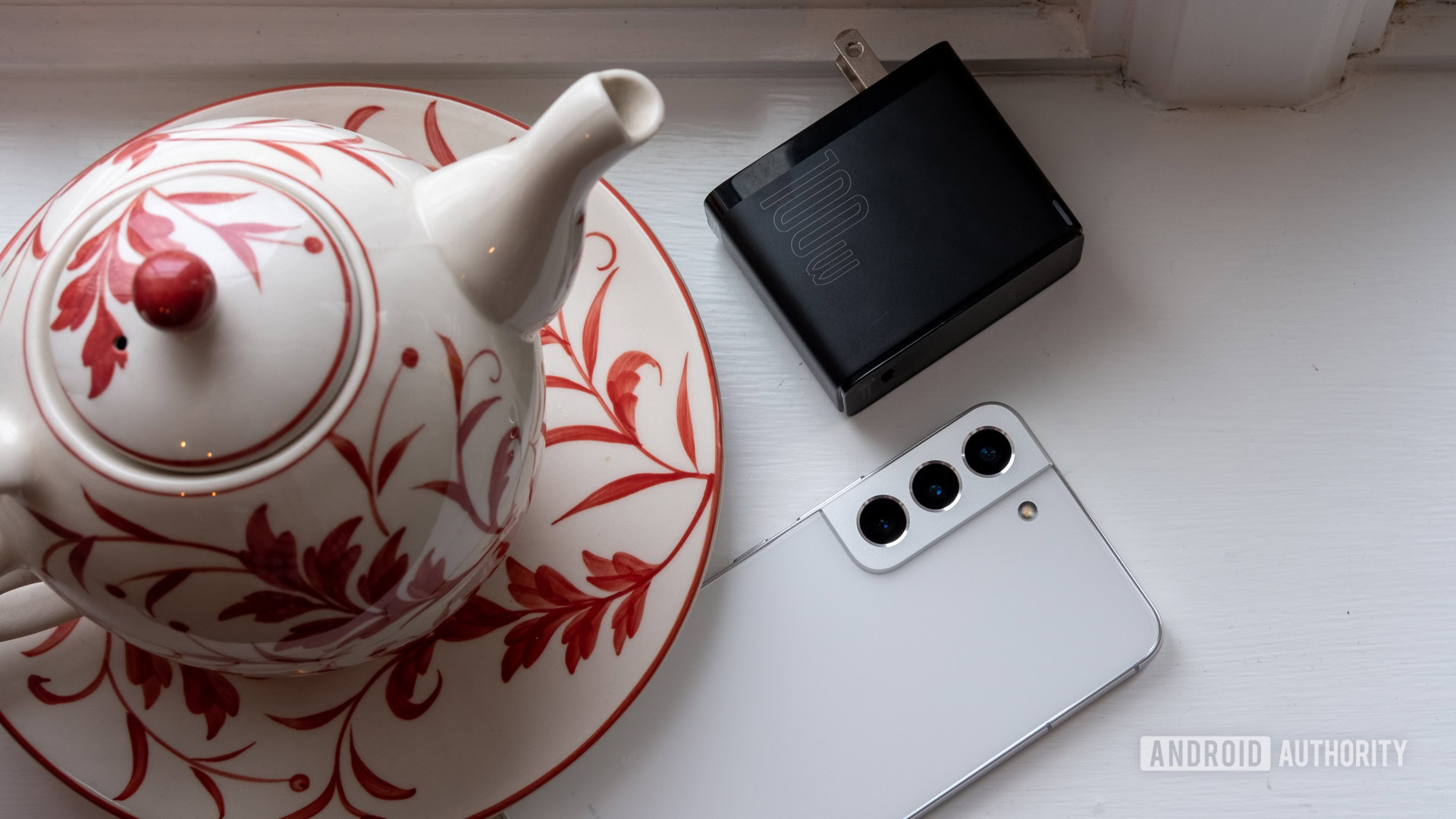
Ryan Haines / Android Authority
GaN is short for Gallium Nitride, an alternative semiconductor that can withstand higher voltages and temperatures than silicon. It’s also far more efficient, which means less heat produced than conventional chargers. Integrated power circuits built with GaN can also reach higher power densities, meaning they can be smaller than conventional circuits.
All of these factors make GaN the perfect choice for building smaller chargers than conventional bricks. And in my year-long experience, they work shockingly well too.
I use my 65W Baseus charger to charge up my laptop, Steam Deck, and smartphone daily. Not all at once, of course, but it’s always plugged into at least one of my devices throughout the day. In fact, I love it so much that I’ve bought a second one that lives in my laptop bag. And much to my surprise, Baseus’ latest GaN5 Pro 65W model has actually shrunk an inch in length compared to the previous one I own. That just goes to show how quickly charging tech is progressing without most of us realizing it.
Which GaN charger should you buy?
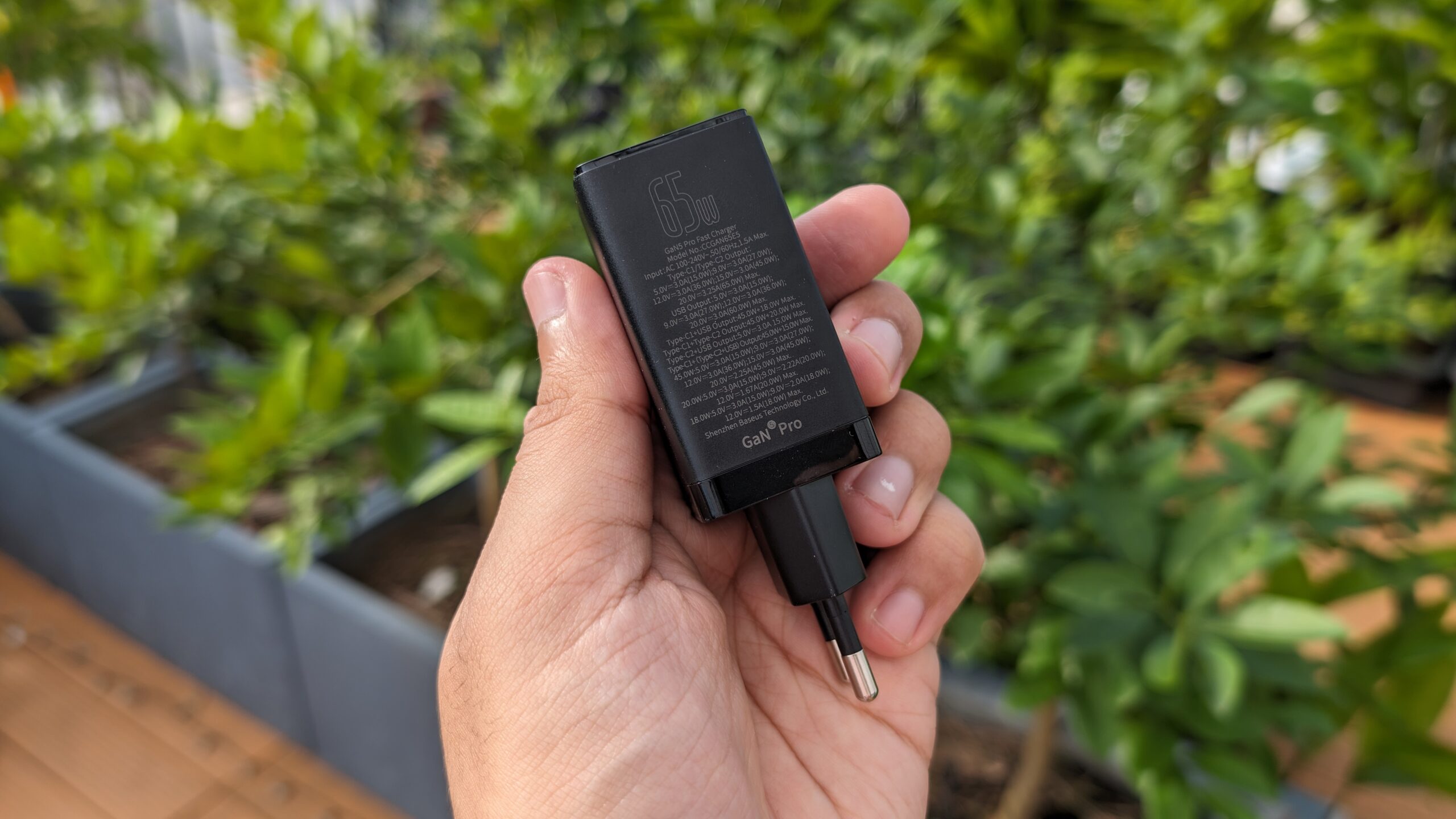
Calvin Wankhede / Android Authority
Most 65W GaN chargers include two USB-C and one USB-A ports, with power split between them depending on which ports you use. For example, I could top up my laptop at 45W while still leaving up to 20W for my smartphone or headphones. Even if your laptop can charge at 65W or 100W over USB PD, it likely won’t complain about dropping down to 45W. The latter also generates less heat so it’s a win-win in my case.
While I can only personally vouch for Baseus, other GaN chargers exist too and deserve your attention equally. For example, UGREEN tends to be available more widely and the company has gone the extra mile to secure safety certifications from the likes of TÜV SÜD for its recent products. UGREEN’s Nexode series goes up to 140W and 300W if you don’t mind a bulkier design, but I’d recommend buying the 100W charger as it’s the sweet spot for most people.
Anker is another brand that has built a reputation for itself in the charging adapter market. At just $30, the Anker Nano II 65W packs the same suite of ports and compatibility as my daily driver. Alternatively, a few bucks more will get you the GaN II 100W instead.
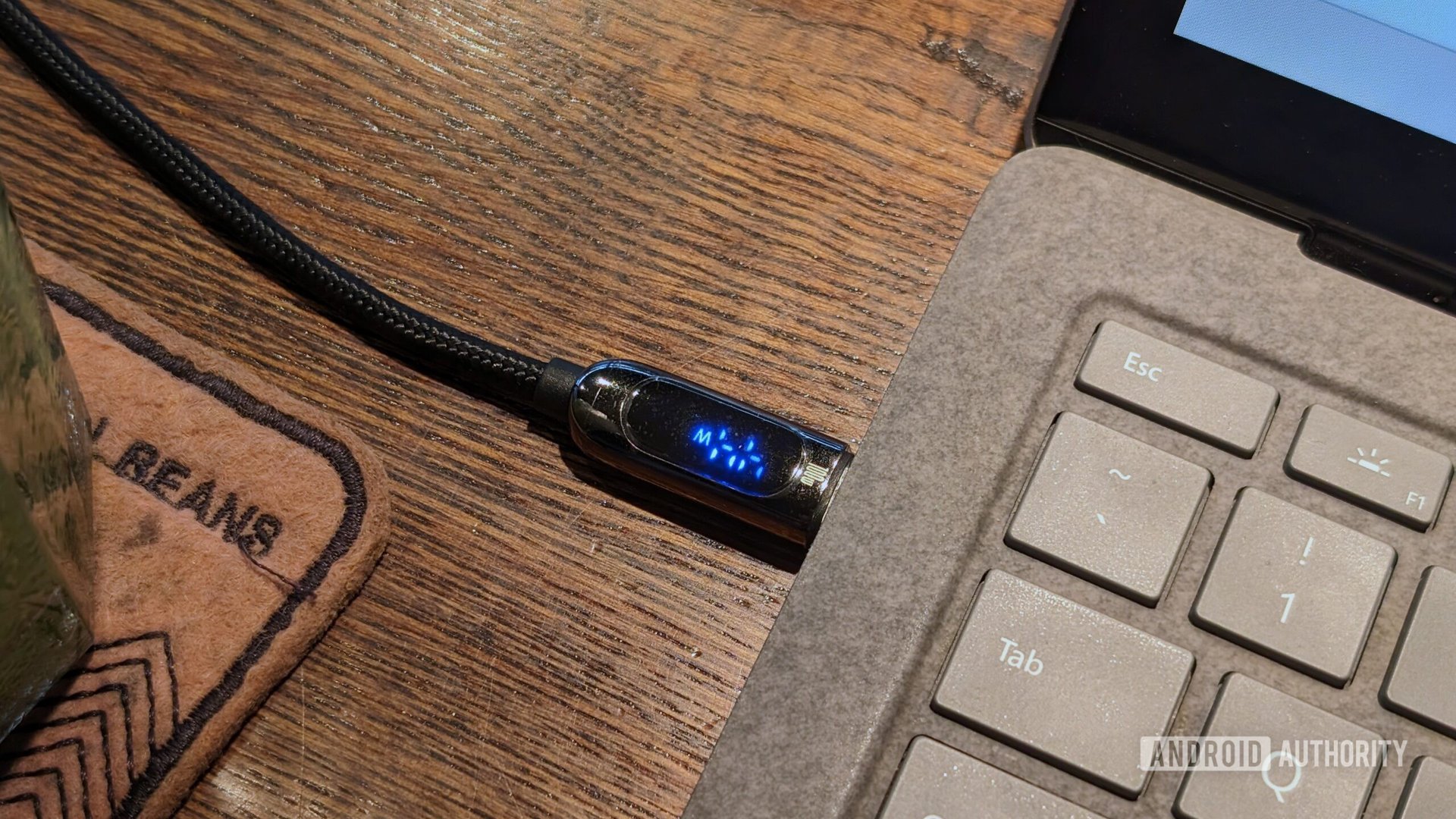
Calvin Wankhede / Android Authority
Regardless of which charger you get, I’d also recommend picking up a longer USB-C cable. You can’t truly replace a laptop brick without a six-foot cable, which is double the length of most included cables. I didn’t realize this until I couldn’t plug into far-away outlets at coffee shops and airports. As a side note, I splurged a bit and got Baseus’ six-foot cable with a display that reads the current output wattage (pictured above). Not a necessary feature, but it’s definitely very cool for just over $10.

